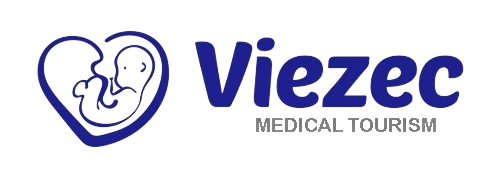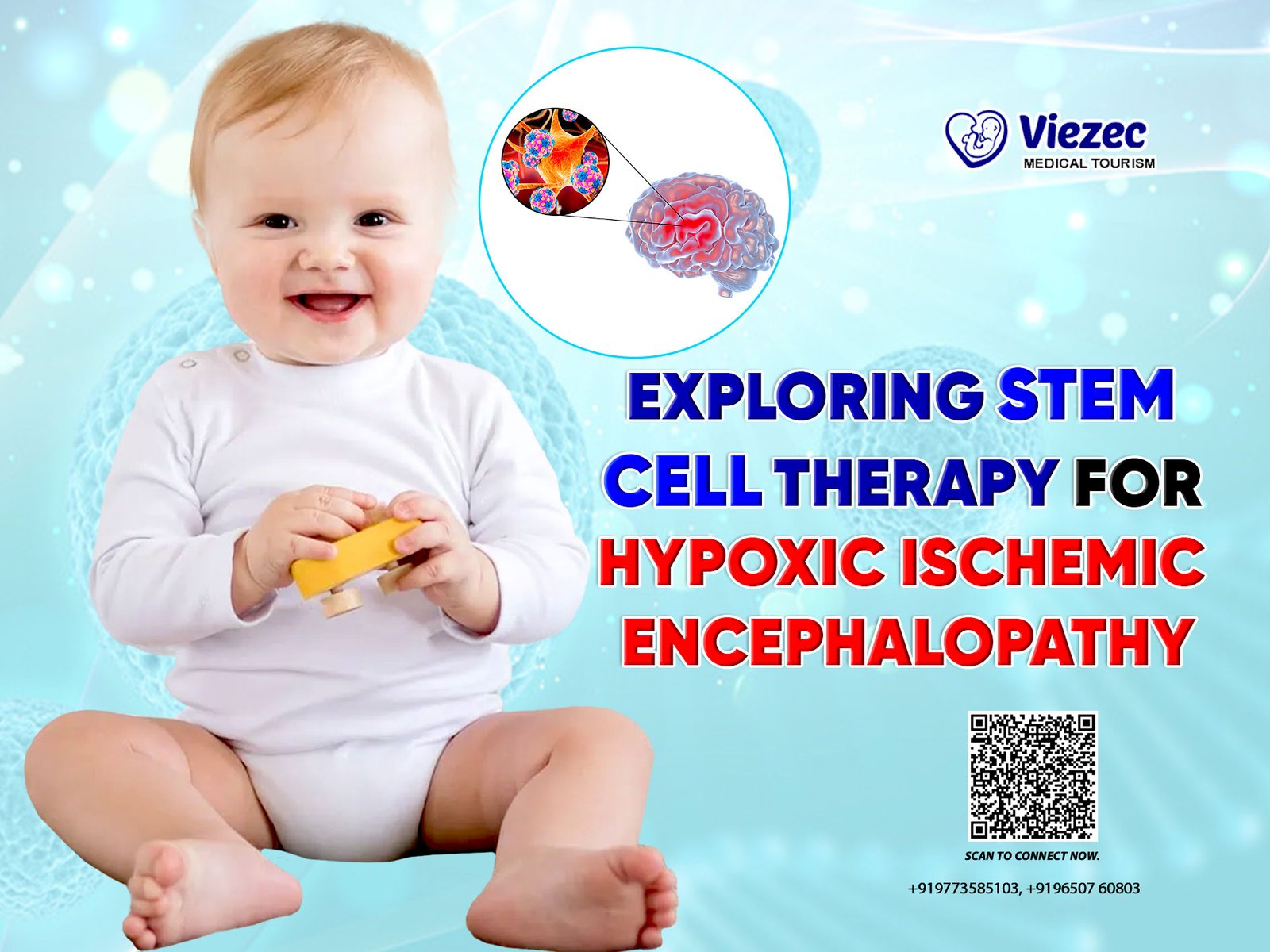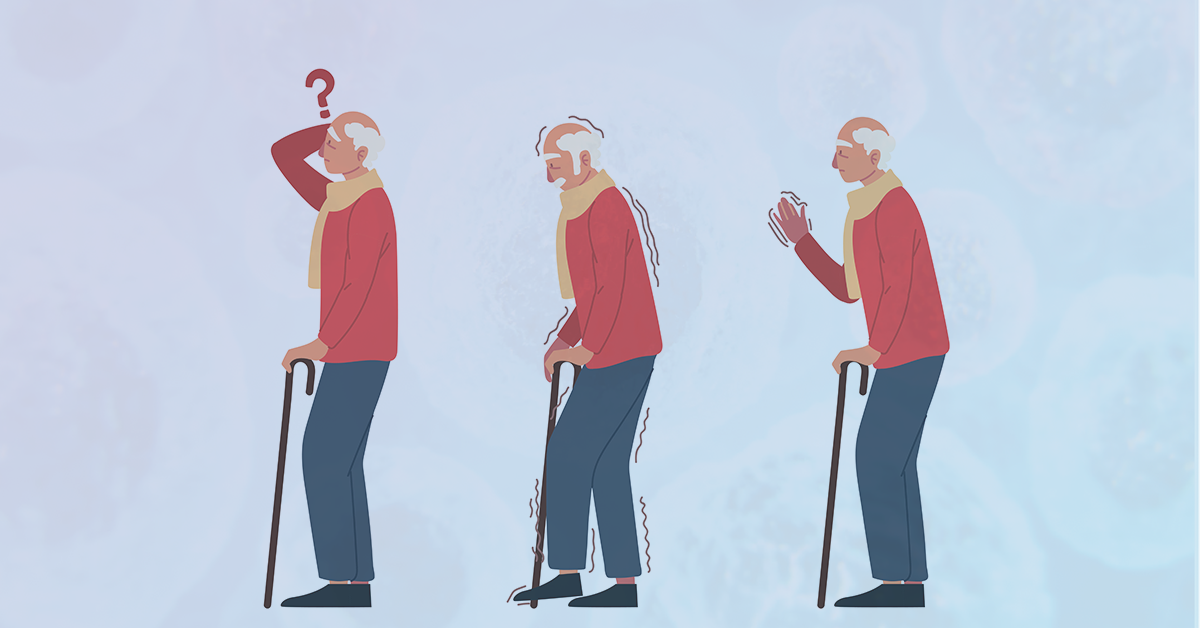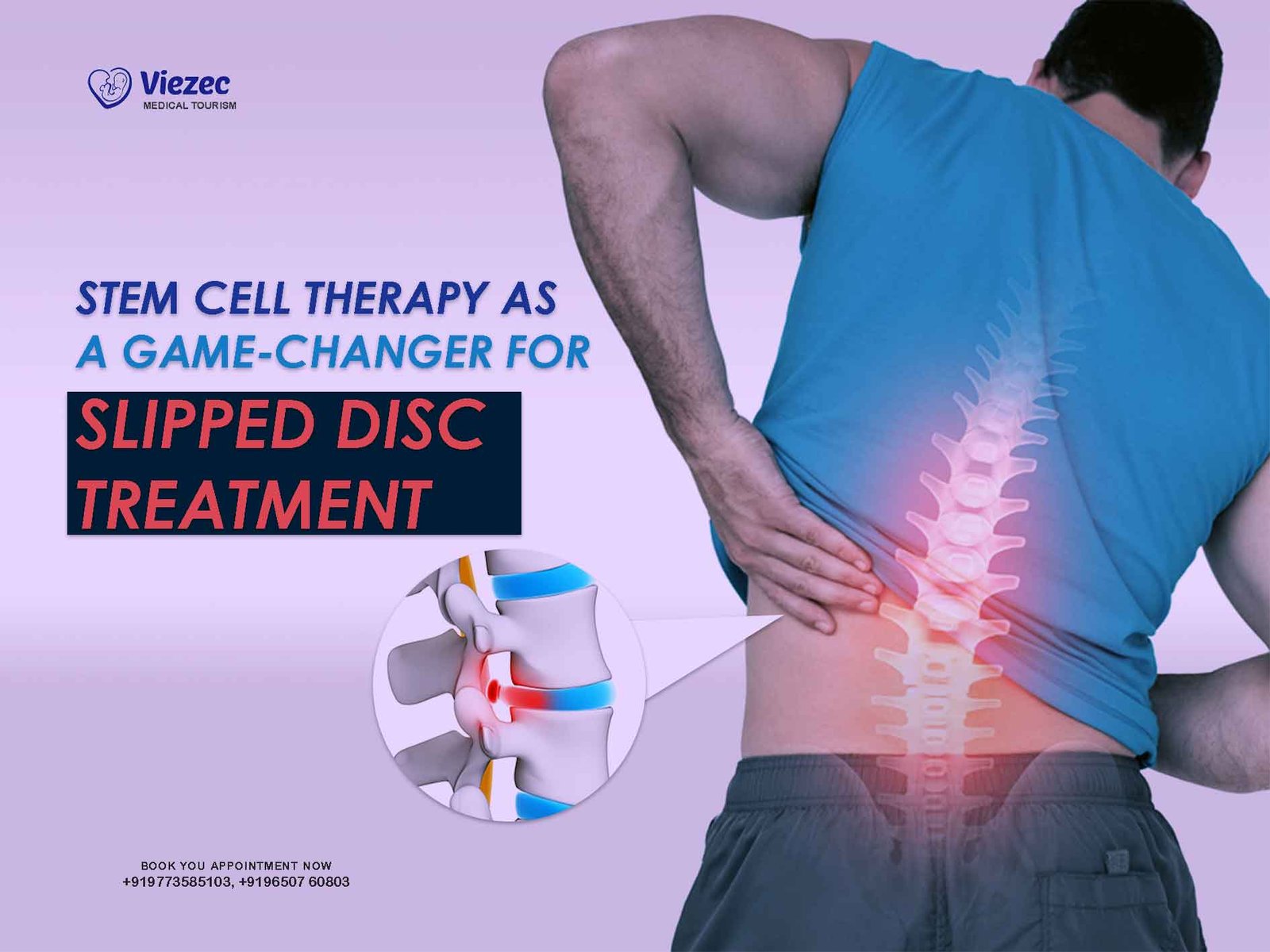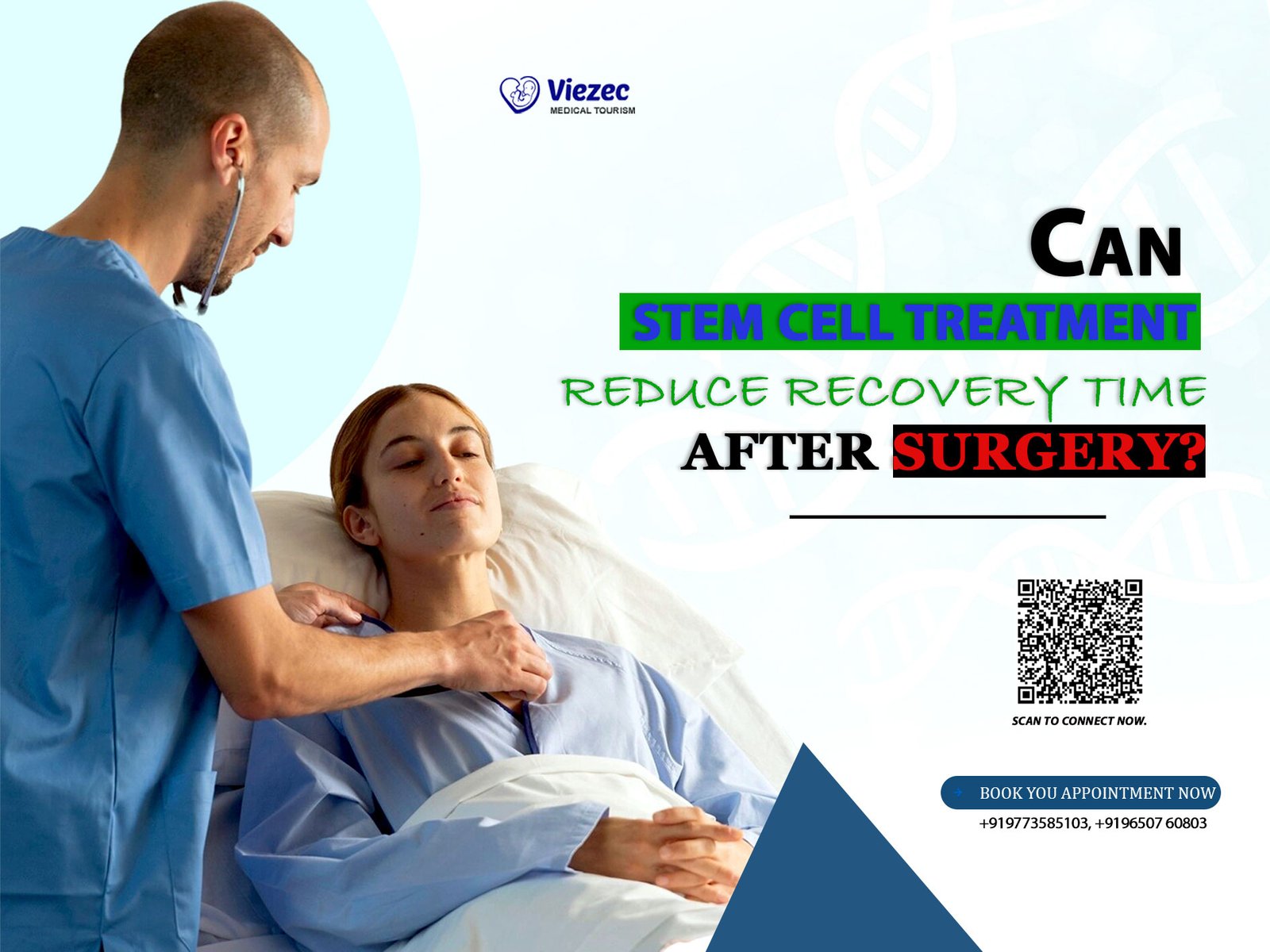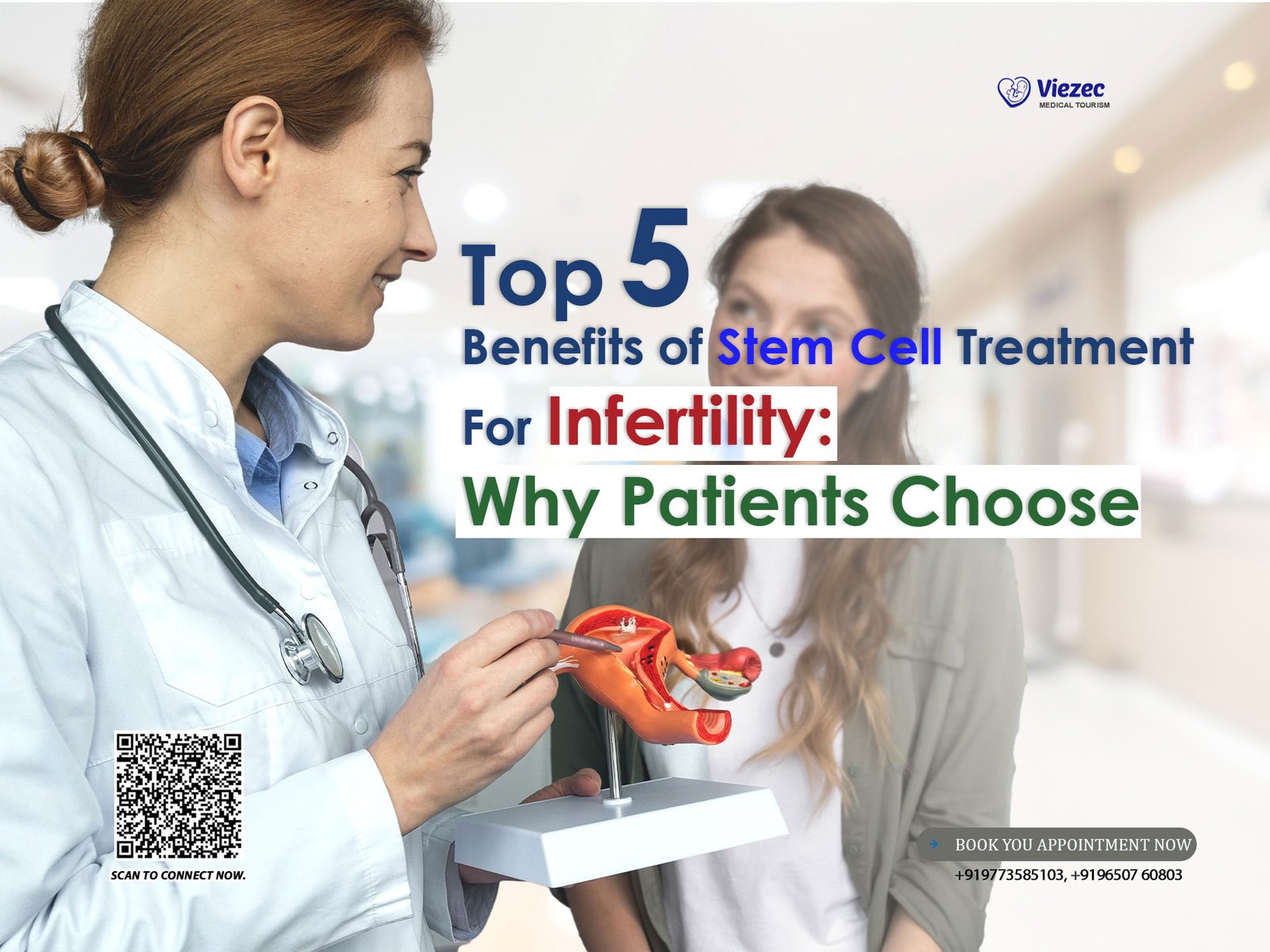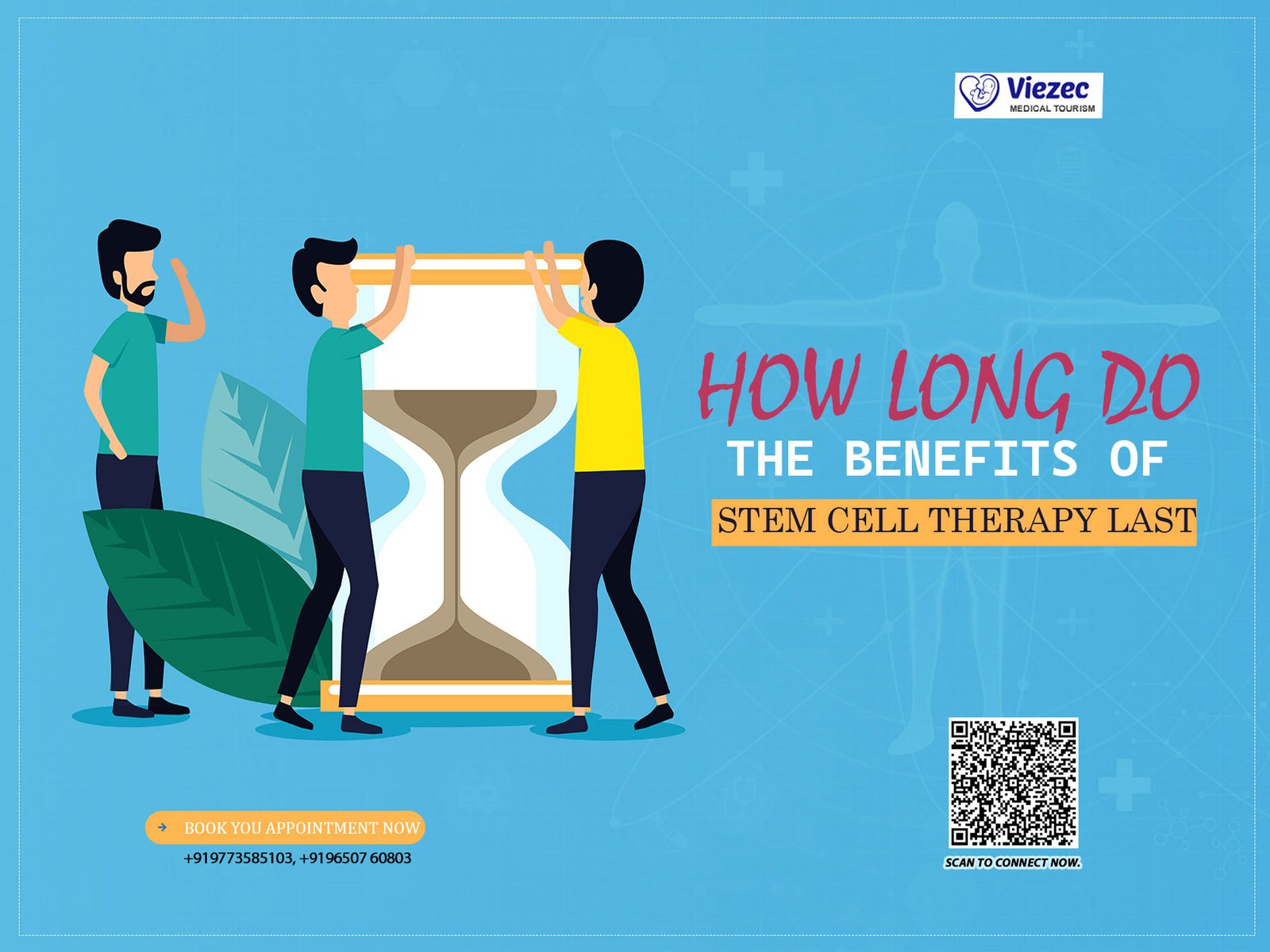Hypoxic Ischemic Encephalopathy (HIE) is a severe neurological condition caused by a lack of oxygen and blood flow to the brain, typically during birth or early childhood. HIE can result in long-term complications, including developmental delays, motor impairments, and cognitive challenges. Traditional treatment options focus primarily on supportive care, but recent advancements in regenerative medicine, particularly stem cell therapy, offer promising avenues for recovery.
Understanding Hypoxic Ischemic Encephalopathy
Hypoxic Ischemic Encephalopathy (HIE) is a serious neurological condition that occurs when the brain does not receive enough oxygen (hypoxia) and blood flow (ischemia). This lack of oxygen and nutrients can cause damage to brain cells, potentially leading to long-term cognitive, motor, and developmental impairments. HIE is most commonly seen in newborns and infants, often resulting from complications during pregnancy, labor, or delivery, but it can also occur in older children or adults following events like cardiac arrest, severe infections, or traumatic injuries.
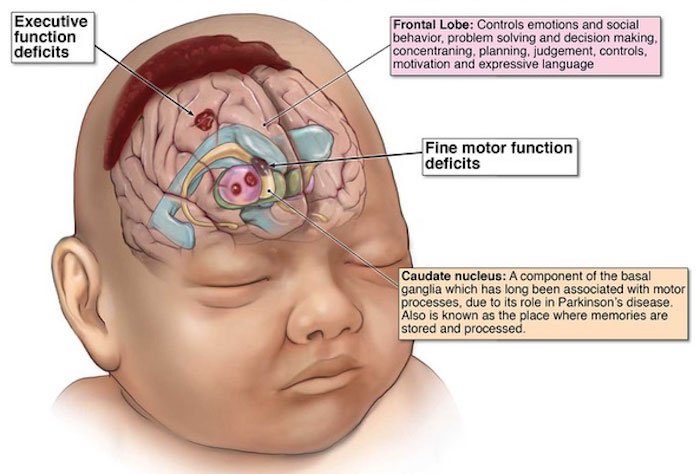
Causes of HIE
HIE develops when the brain experiences oxygen deprivation, which can result from:
-
Birth Complications: Umbilical cord issues, prolonged labor, or placental insufficiency.
-
Maternal Health Issues: Severe maternal hypotension, infections, or preeclampsia.
-
Medical Emergencies: Cardiac arrest, severe respiratory problems, or stroke in infants or adults.
Early identification of these risk factors is crucial, as timely intervention can reduce the severity of brain injury.
Symptoms of HIE
The signs of HIE may vary depending on the severity of the condition:
In Newborns:
-
Weak or absent reflexes
-
Difficulty breathing or low oxygen saturation
-
Poor muscle tone or abnormal movements
-
Seizures or unusual jerking motions
-
Feeding difficulties
In Older Children or Adults:
-
Impaired cognitive abilities or learning difficulties
-
Motor skill challenges or coordination issues
-
Speech or language delays
-
Behavioral changes
Recognizing symptoms early allows healthcare providers to initiate supportive care and consider advanced interventions like stem cell therapy.
Stages of HIE
HIE is typically classified based on severity, which helps guide treatment and prognosis:
-
Mild HIE: May cause temporary neurological changes with minimal long-term effects.
-
Moderate HIE: Can lead to more pronounced motor and cognitive impairments, requiring ongoing therapy and intervention.
-
Severe HIE: Often associated with significant brain damage, potentially resulting in lifelong disabilities or chronic neurological disorders.
Diagnosis of HIE
Accurate diagnosis of HIE involves a combination of clinical assessments, imaging, and laboratory tests:
-
Neurological Examination: Evaluates reflexes, muscle tone, and responsiveness.
-
Magnetic Resonance Imaging (MRI) or CT Scans: Detect areas of brain injury.
-
Electroencephalography (EEG): Monitors brain activity and identifies seizure patterns.
-
Blood Tests: Assess oxygen levels, metabolic disturbances, and organ function.
Early diagnosis is critical to initiate therapies that may reduce brain injury, support recovery, and improve long-term outcomes.
Long-Term Impact of HIE
The consequences of HIE can vary widely depending on the severity of the oxygen deprivation and the timeliness of interventions. Potential long-term effects include:
-
Developmental delays and learning difficulties
-
Cerebral palsy or motor impairments
-
Epilepsy or seizure disorders
-
Speech and language challenges
-
Behavioral and psychological issues
The Role of Stem Cell Therapy in Hypoxic Ischemic Encephalopathy (HIE)
Stem cell therapy is emerging as one of the most promising approaches for addressing the neurological damage caused by Hypoxic Ischemic Encephalopathy (HIE). Unlike traditional treatments, which primarily focus on managing symptoms, stem cell therapy aims to repair and regenerate damaged brain tissue.
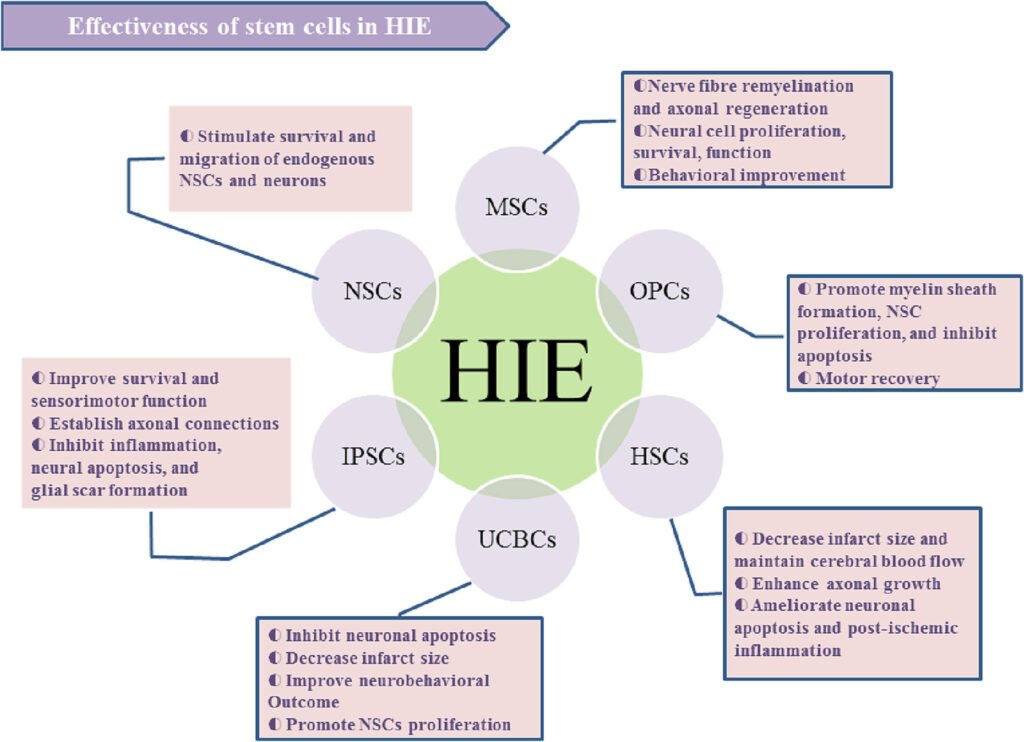
Understanding How Stem Cells Work in HIE
Stem cells are unique because of two key abilities:
-
Differentiation – Stem cells can transform into various specialized cell types, including neurons (brain cells), astrocytes, and oligodendrocytes, which are critical for brain function.
-
Paracrine Effects – Even without directly becoming new brain cells, stem cells release growth factors, anti-inflammatory proteins, and neurotrophic molecules that support brain repair and reduce further damage.
In HIE, oxygen deprivation triggers inflammation, cell death, and impaired neuronal connections. Stem cells intervene in several ways:
-
Neuroprotection: Stem cells reduce oxidative stress and inflammation, helping prevent further neuronal damage.
-
Neuroregeneration: They promote the formation of new neurons and support existing neurons to recover function.
-
Angiogenesis: Stem cells stimulate new blood vessel formation, improving oxygen and nutrient delivery to damaged areas.
-
Synaptic Repair: They facilitate the re-establishment of neural networks, enhancing motor and cognitive functions.
Types of Stem Cells Used in HIE Therapy
Several types of stem cells have been studied and utilized for HIE treatment:
| Stem Cell Type | Source | Role in HIE Therapy |
|---|---|---|
| Umbilical Cord Blood Stem Cells (UCBSCs) | Cord blood collected at birth | Rich in hematopoietic and mesenchymal stem cells; safe and effective for early intervention |
| Mesenchymal Stem Cells (MSCs) | Bone marrow, adipose tissue, umbilical cord | Anti-inflammatory, neuroprotective, and regenerative properties |
| Neural Stem Cells (NSCs) | Laboratory-expanded from fetal or induced pluripotent stem cells | Can differentiate into neurons and glial cells; support brain repair directly |
Administration Methods
Stem cell therapy for HIE is carefully tailored based on patient condition, age, and severity of the brain injury. Common administration methods include:
-
Intravenous Infusion: Stem cells enter the bloodstream and migrate to the injured brain regions.
-
Intrathecal Injection: Cells are delivered directly into the cerebrospinal fluid for targeted brain delivery.
-
Intranasal Delivery: An emerging non-invasive route that allows stem cells to reach the brain via the olfactory pathway.
Key Considerations for Patients and Families
Before pursuing stem cell therapy, families should consult with qualified regenerative medicine specialists and consider:
-
The timing of treatment – early intervention often leads to better outcomes.
-
The type of stem cells most suitable for the patient’s condition.
-
Potential risks – while generally safe, stem cell therapy may have complications like infection or immune reactions.
-
Regulatory compliance – ensure the clinic follows international guidelines and ethical standards for stem cell treatments.
Stem cell therapy offers hope for meaningful neurological recovery in children and adults affected by HIE. When combined with rehabilitative therapies and expert medical care, it represents a proactive approach to improving brain function and quality of life.
Why Choose Viezec for Stem Cell Therapy in India
Choosing the right clinic for stem cell therapy is a critical decision, especially for neurological conditions like Hypoxic Ischemic Encephalopathy (HIE). At Viezec, we combine advanced medical expertise, rigorous safety standards, and patient-focused care to provide world-class regenerative treatments in India. Here’s why patients and families trust us:

Expertise in Regenerative Medicine
Our team comprises highly trained specialists in neurology, stem cell research, and regenerative therapies. With years of experience in treating complex neurological disorders, our medical professionals ensure that every treatment plan is tailored to the patient’s unique condition, maximizing the chances of positive outcomes.
State-of-the-Art Facilities
Viezec operates using cutting-edge technology and modern laboratory standards. Our stem cell processing and administration procedures adhere to internationally recognized protocols, ensuring safety, purity, and efficacy. From cell sourcing to delivery, every step is meticulously monitored under strict quality controls.
Personalized Treatment Plans
We understand that every patient is unique. Our team conducts a comprehensive assessment, including detailed neurological evaluations and diagnostic testing, to design a treatment plan specifically suited to each patient. Personalized therapy ensures optimal results and minimizes risks.
Evidence-Based Approach
At Viezec, we prioritize treatments backed by scientific research and clinical evidence. We stay updated with the latest advancements in stem cell therapy and integrate proven protocols into our clinical practice. Our approach emphasizes transparency, allowing patients to make informed decisions about their care.
Comprehensive Patient Support
We provide end-to-end support throughout the treatment journey, including:
-
Pre-treatment counseling and eligibility assessment
-
Step-by-step guidance on therapy procedures
-
Post-treatment follow-up to monitor progress and address concerns
-
Rehabilitation recommendations to enhance recovery outcomes
Commitment to Safety and Ethics
Patient safety is our top priority. All procedures are performed under strict medical supervision in fully equipped facilities. We adhere to ethical standards in stem cell therapy, ensuring that patients receive treatments responsibly and with full awareness of potential benefits and limitations.
Accessibility and Convenience
Located in India, Viezec offers world-class care at accessible costs compared to international treatment centers. We also assist with travel arrangements, accommodation, and teleconsultations, making advanced stem cell therapy convenient for both domestic and international patients.
Choosing Viezec for stem cell therapy means selecting a trusted provider that blends medical expertise, scientific rigor, patient-focused care, and ethical practices. We are dedicated to guiding patients and families through every step of their regenerative medicine journey, empowering them with knowledge, safety, and hope for a better quality of life.
Conclusion
Stem cell therapy represents a beacon of hope for children and adults affected by Hypoxic Ischemic Encephalopathy. While not a guaranteed cure, it offers the potential to repair damaged brain tissue, improve neurological function, and enhance quality of life. Consulting with experienced stem cell specialists is the first step toward understanding how this innovative therapy can benefit your loved one.
FAQs
What is Hypoxic Ischemic Encephalopathy (HIE) and how does it affect the brain?
HIE occurs when the brain receives insufficient oxygen and blood supply, often during birth or early childhood. This can cause damage to brain cells, leading to developmental delays, motor impairments, cognitive challenges, or seizures. Early diagnosis and intervention are crucial to improving outcomes.
How does stem cell therapy help in treating HIE?
Stem cell therapy promotes brain repair by regenerating damaged neurons, reducing inflammation, and supporting new blood vessel formation. It does not provide an immediate cure but can improve motor and cognitive functions and enhance overall quality of life.
Who is eligible for stem cell therapy for HIE?
Eligibility is determined after a thorough medical and neurological assessment. Generally, patients with confirmed HIE, stable health conditions, and no severe underlying complications may be considered suitable candidates.
Is stem cell therapy safe for children with HIE?
When performed under strict medical supervision by experienced specialists, stem cell therapy is generally safe. Viezec follows international safety and ethical standards, including careful cell sourcing, preparation, and administration, to minimize risks.
How long does it take to see results after stem cell therapy?
Improvements can vary depending on the severity of HIE and the patient’s overall health. Some patients may notice gradual improvements in motor or cognitive functions within weeks, while others may require several months of follow-up care and therapy.
What types of stem cells are used in therapy for HIE?
Stem cells can be sourced from umbilical cord blood, bone marrow, or adipose tissue. Each type has unique properties to support brain repair, and the choice depends on patient needs and clinical recommendations.
Are there any side effects or risks associated with stem cell therapy?
Stem cell therapy is generally well-tolerated. Mild side effects may include temporary fever, headache, or discomfort at the injection site. Serious complications are rare when therapy is performed by trained professionals in accredited facilities.
Why should I choose Viezec for stem cell therapy in India?
Viezec combines expert medical teams, advanced laboratory technology, personalized treatment plans, evidence-based protocols, and comprehensive patient support. We prioritize safety, ethics, and long-term outcomes, making us a trusted choice for families seeking regenerative treatments for HIE.
Take the First Step Towards Recovery
If you or your loved one is living with Hypoxic Ischemic Encephalopathy, timely intervention can make a significant difference. At Viezec, we provide advanced stem cell therapies tailored to each patient’s unique needs, backed by medical expertise, cutting-edge technology, and comprehensive care.
Why Connect With Us Today?
-
Personalized evaluation and treatment planning
-
Access to world-class stem cell technology in India
-
Guidance through every step of the therapy process
-
Ongoing support and follow-up to monitor progress
Book a Consultation Today
Take the first step towards improving neurological function and quality of life. Contact our expert team to schedule a consultation and learn how stem cell therapy can help.
